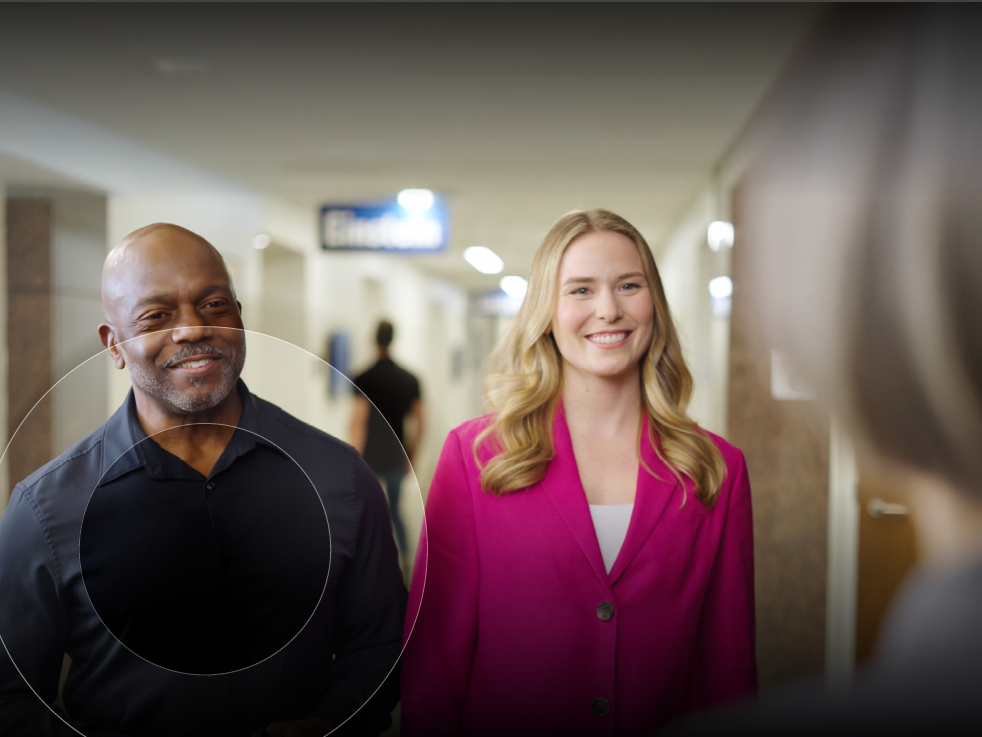Innovation Heroes: Reinventing video collaboration with Webex Hologram:
Some people set out to innovate. For others, innovation finds them.

In 2015, Elizabeth Bienek headed the development of what would become the world’s leading holographic collaboration technology – Webex Hologram. In the latest episode of Innovation Heroes, she discusses her journey with host Ed McNamara. This conversation highlights that innovation is often about seizing opportunities, embracing challenges, and putting people first.
A spark of disruption
It all started with a simple disagreement over coffee with her boss. Elizabeth said Cisco’s short-term corporate strategy was impeding their ability to innovate.
“I just was feeling a little cheeky and started asking like, why do we do our strategy this way? …. Can’t we do this better?… And he flipped the script on me a little bit and kind of gave me the challenge of, well, if you’re going to bring up a problem, bring up a solution.”
This challenge from her boss wasn’t intended to stifle her creativity, but rather to empower it. The conversation became a catalyst for technological advancement and spurred Elizabeth to find practical solutions, eventually becoming the launchpad for Webex Hologram.
Building a human-centric future with augmented reality
Elizabeth and her team used augmented reality technology to create Webex Hologram. But it wasn’t just about innovating and disrupting the video collaboration market. It was about creating a more human-centric approach to technology. She emphasizes the importance of focusing on the user experience and creating technology that enhances human connection. This focus on “good peopling” rather than solely technology-driven design underscores her philosophy.
“Everything is people-centric. Life is driven by relationships. Technology is driven by relationships. So, any time that you’re thinking about… tech first, people second, it’s not going to work. So, when you’re focused on people first, how does the tech support that? That’s going to work. And so that, that’s how the good peopling came about.”
Lessons learned: Startup mindset to corporate innovation
Elizabeth emphasizes the power of a “startup mindset” within a large corporation. She ran the project as a stealth engineering operation out of Cisco’s CTO’s office, but didn’t think about it as an engineering project.
“I had business development, I had user experience, I had operations… I had a lot of different pieces that you would see as part of a whole company or a whole startup venture, not just core engineering,” she explained. “Because if we just had great tech but didn’t know how to pitch it, even internally, or market it or sell it or deal with those user experiences, it was not going to be successful.”
Elizabeth believes focused projects that strive for industry disruption with well-rounded teams, clear deliverables, and a long-term vision are key. In her book, Cake on Tuesday: 25 Lessons to Unlock Corporate Innovation, she emphasizes the importance of bite-sized projects and timelines within the larger project and clear communication with stakeholders to maintain momentum. The structured approach of short phases with clear micro goals mirrors the agility and resourcefulness of a startup, keeping Elizabeth’s team motivated and aligned.
Elizabeth Bieniek’s incredible journey emphasizes the importance of embracing the unexpected, challenging conventions, and prioritizing a human-centered approach to innovation. Her story is a testament to how innovation can emerge from unexpected sources and create lasting impact.
Listen to the full conversation here. You can also find episodes on SHI’s Resource Hub, Spotify, and other major podcast platforms, as well as on YouTube in video format.
Video + audio
Audio only






